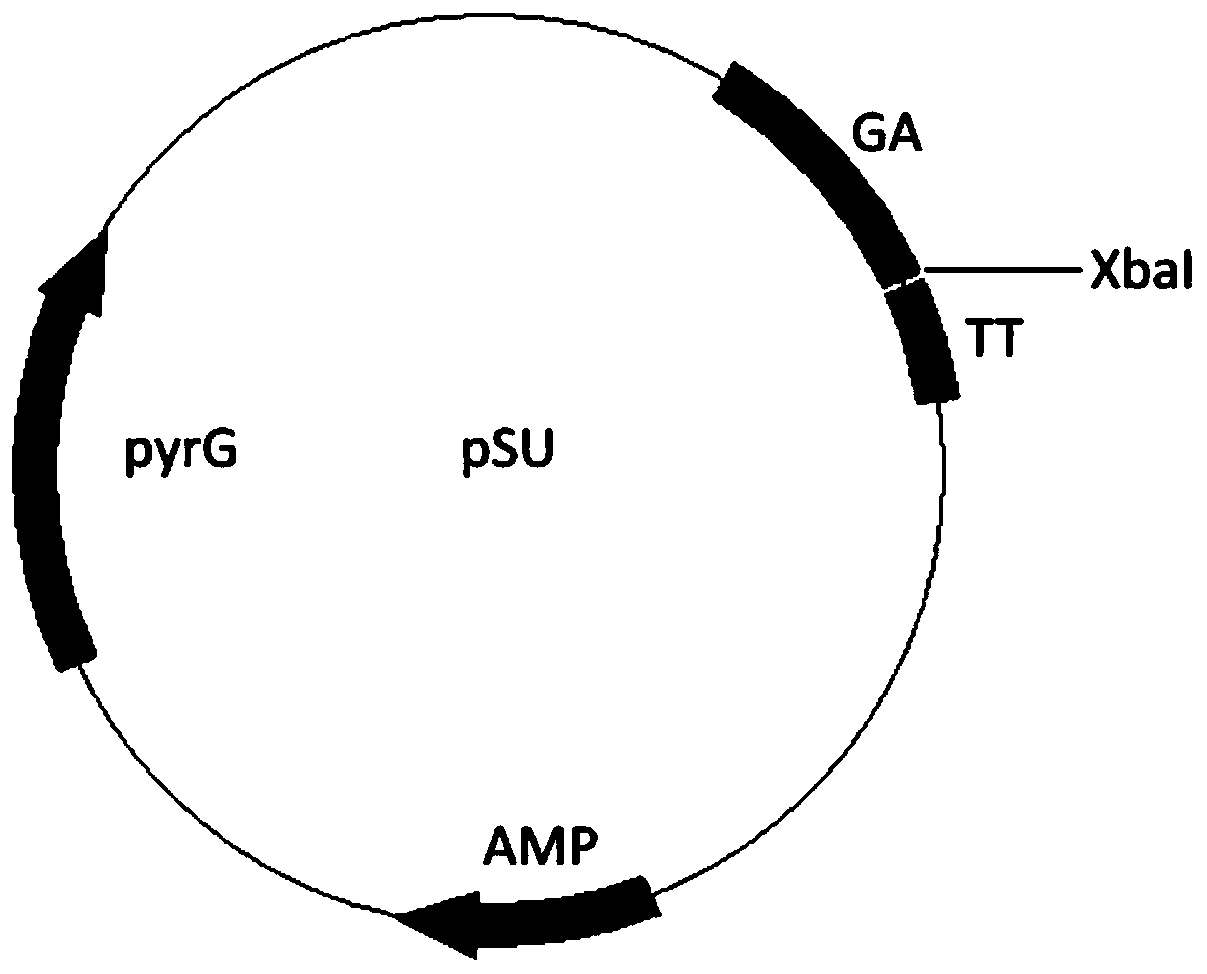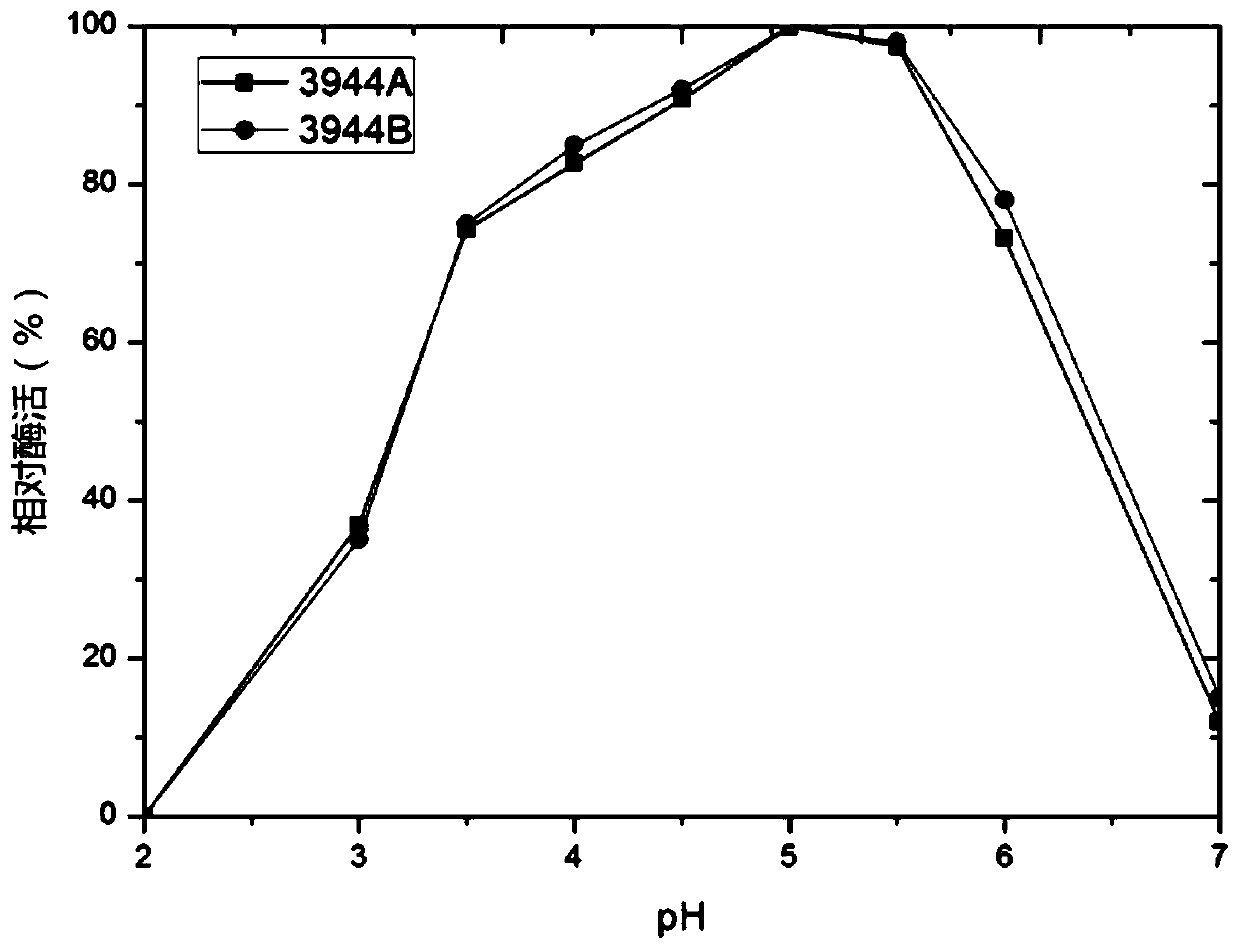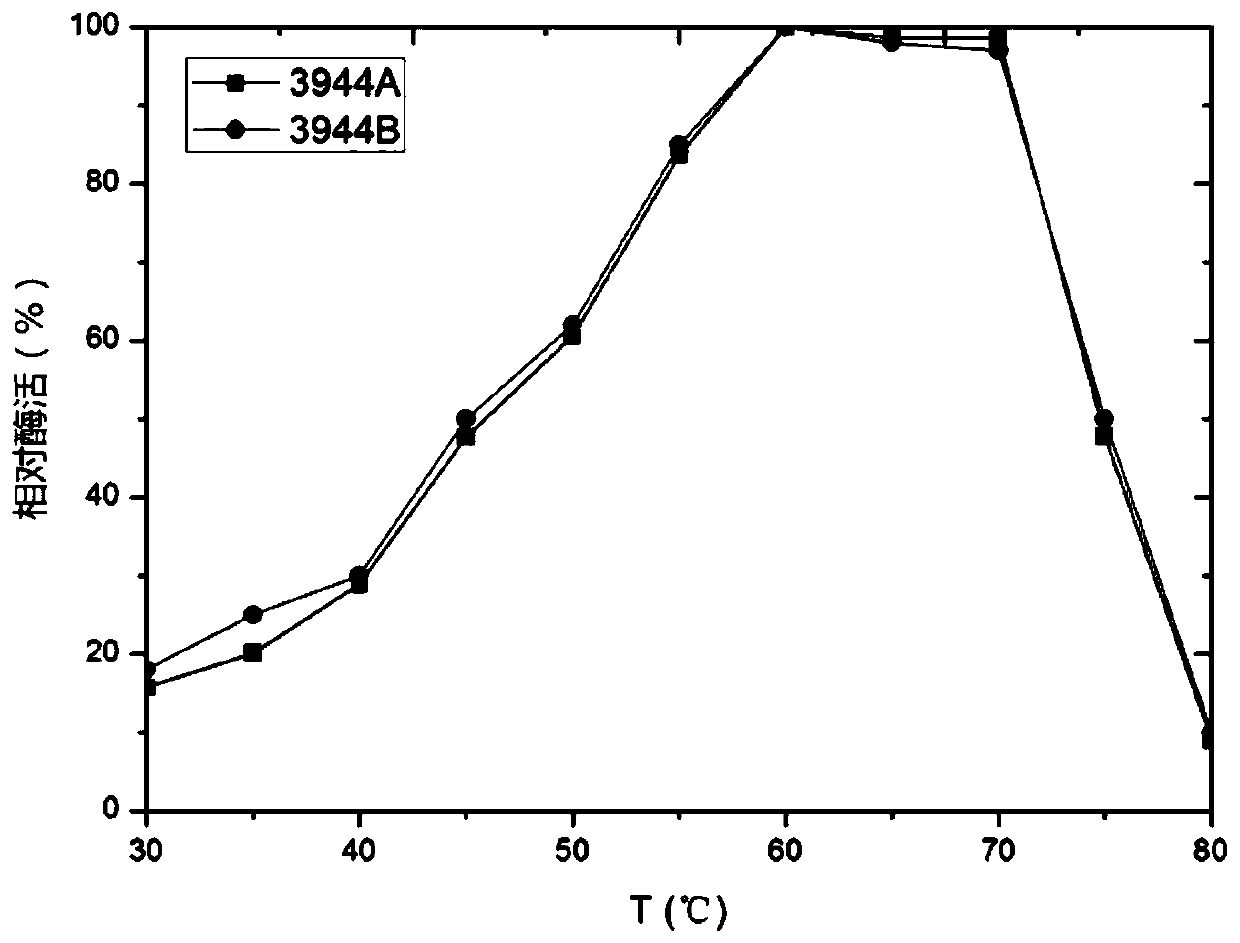Aspergillus niger strain with high rhamnosidase yield
A technology of rhamnosidase and Aspergillus niger, applied in the field of genetic engineering, can solve problems such as difficult to achieve purity
- Summary
- Abstract
- Description
- Claims
- Application Information
AI Technical Summary
Problems solved by technology
Method used
Image
Examples
Embodiment 1
[0023] Example 1 Cloning of rhamnosidase gene
[0024] Aspergillus aculeatus ( Aspergillus aculeatus ) genome as a template, using primers 1 and 2 to amplify a rhamnosidase gene fragment, its nucleotide sequence is SEQ ID NO: 2, and its encoded amino acid sequence is SEQ ID NO: 1.
[0025] PCR primers and reaction conditions are as follows:
[0026] Primer 1 (F): ATGTTGTGGTCATCCTGGATC;
[0027] Primer 2 (R): CTATAGCCCTTCAAGGTCCA.
[0028] The reaction conditions were as follows: denaturation at 94°C for 5 minutes; then denaturation at 94°C for 30 seconds, renaturation at 58°C for 30 seconds, extension at 72°C for 120 seconds, and after 30 cycles, incubation at 72°C for 10 minutes. The results of agarose electrophoresis showed that the size of the amplified rhamnosidase gene was 1845bp.
Embodiment 2
[0029] Example 2 Construction of recombinant vector
[0030] The above-mentioned rhamnosidase gene was amplified by PCR, and XbaI sites were introduced at both ends of the primers. The primer sequences are as follows:
[0031] Primer 3 (F): GTA TCTAGA ATGTTGTGGTCATCCTGGATC;
[0032] Primer 4 (R): GAC TCTAGA CTATAGCCCTTCAAGGTCCA.
[0033] The PCR reaction conditions were as follows: denaturation at 94°C for 5 min; then denaturation at 94°C for 30 s, renaturation at 58°C for 30 s, extension at 72°C for 120 s, and after 30 cycles, incubation at 72°C for 10 min. The results of agarose gel electrophoresis showed that the rhamnosidase gene was a fragment with a size of 1845bp.
[0034] The rhamnosidase gene fragment obtained above and the expression vector pSU were subjected to single digestion with restriction endonuclease XbaI respectively, and the digestion conditions were as follows:
[0035] PCR fragment digestion system (50ul) Plasmid pSU enzyme digestion ...
Embodiment 3
[0039] Example 3 Recombinant expression of rhamnosidase
[0040] 1. Protoplast preparation:
[0041]Inoculate Aspergillus niger host strain Su12 on PDA+U (potato 200g / L, boil for 20-30min, then filter to remove residue; glucose 2%; Uridine 1%; agar powder 1.5%), culture at 30°C for 5-7d; cut 2cm Bacteria blocks with a size of ×2cm were inoculated into 100ml liquid PDA+U (potato 200g / L, boiled for 20-30min and then filtered to remove residue; glucose 2%; Uridine 1%) medium, cultured at 30°C for 16h to grow mycelia for Transformation: After filtering the grown mycelia, resuspend with 20ml 1.2M magnesium sulfate solution; add 0.2g lysozyme, culture at 30°C, 100rpm for 2-3h; filter the lysed mycelium with 2 layers of lens paper , centrifuge at 3000rpm for 10min to obtain protoplasts; filter the lysed mycelia with lens paper, and centrifuge to obtain protoplasts; then resuspend with an appropriate amount of sorbitol solution.
[0042] 2. Conversion:
[0043] The Aspergillus nige...
PUM
 Login to View More
Login to View More Abstract
Description
Claims
Application Information
 Login to View More
Login to View More - R&D
- Intellectual Property
- Life Sciences
- Materials
- Tech Scout
- Unparalleled Data Quality
- Higher Quality Content
- 60% Fewer Hallucinations
Browse by: Latest US Patents, China's latest patents, Technical Efficacy Thesaurus, Application Domain, Technology Topic, Popular Technical Reports.
© 2025 PatSnap. All rights reserved.Legal|Privacy policy|Modern Slavery Act Transparency Statement|Sitemap|About US| Contact US: help@patsnap.com



